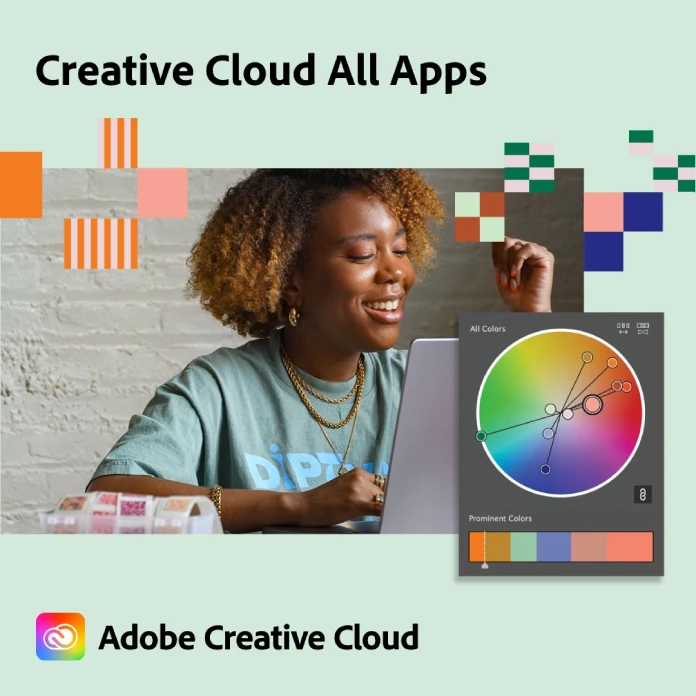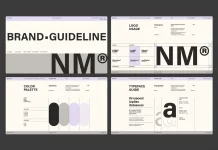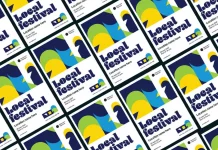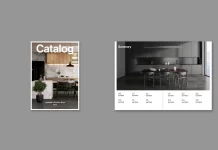This post contains affiliate links. We may earn a commission if you click on them and make a purchase. It’s at no extra cost to you and helps us run this site. Thanks for your support!
Imagine this: waking up to the sound of crashing waves in Bali. Or perhaps sipping a latte in a cozy cafe in Buenos Aires. What if you could call anywhere with a Wi-Fi connection to your office? This is the allure of the digital nomad lifestyle. And guess what? If you’re a graphic designer, it might be more attainable than you think. Are you ready to trade the commute for a passport and endless possibilities?
The rise of remote work has opened doors for creative professionals like never before. It’s no longer a futuristic dream. It’s the reality for millions. But how do you actually make the leap? How do you transition from a traditional office to a fully remote graphic design business? And is the digital nomad lifestyle really for everyone? Let’s explore the exciting world of remote work and digital nomad life, focusing on the unique opportunities for graphic designers. We’ll uncover the steps you can take to make this dream your reality, along with honest considerations to ensure a successful and fulfilling transition. So, are you ready to explore the possibilities of remote work as a graphic designer?
The Growing Trend: Remote Work and Why It Matters to You
Remote work isn’t just a passing fad. It’s a fundamental shift in how we approach work. Companies are increasingly embracing distributed teams. Why? Because it allows them to access a wider pool of talent. They can hire the best designers, regardless of location. This increased demand creates incredible opportunities for skilled professionals like you. Think about it: no more geographical limitations holding you back from working on your dream projects.
The benefits extend far beyond just job opportunities. Remote work offers unparalleled flexibility and autonomy. You control your schedule, your work environment, and ultimately, your life. Want to work from a beach in Thailand? You can. Prefer a quiet cabin in the mountains? That’s an option too. This freedom is a major driver for the growing popularity of the digital nomad lifestyle. It’s a way to combine work with travel and adventure. This new way of working appeals to a lot of professionals.

Becoming a Digital Nomad: The Graphic Designer’s Guide
So, how can you, as a graphic designer, capitalize on this trend and become a digital nomad, or at least do your business fully remote? It’s not as simple as packing your bags and booking a one-way ticket. It requires careful planning, preparation, and a proactive approach to building your remote career. Don’t worry; this guide is here to help you navigate the journey.
Level Up Your Skills and Build a Portfolio
The first step is to ensure you have the skills and portfolio to attract clients. The remote job market is competitive. Potential clients can pick from designers all over the world. They want to be sure you have what it takes. Sharpen your skills in the latest design software. Consider specializing in a niche area. This can include branding, web design, or illustration. A strong, targeted portfolio showcasing your best work is crucial. Make sure it’s easily accessible online through a personal website or platforms like Behance and Dribbble. Remember, your portfolio is your first impression. So, make it count.
Optimize Your Online Presence
In the remote world, your online presence is everything. Treat it like your digital storefront. Create a professional website that showcases your portfolio, client testimonials, and contact information. Optimize your website for search engines (SEO). This helps potential clients find you when they search for graphic designers. Use relevant keywords like “freelance graphic designer,” “branding specialist,” or “web design services.”
Be active on social media platforms like LinkedIn or Instagram. Share your work, engage with other designers, and build your personal brand. Consistently posting high-quality content. This establishes you as an expert in your field and attracts potential clients.
Finding Remote Work: Strategies for Graphic Designers
Now that you have the skills and online presence, it’s time to find remote work opportunities. Numerous online platforms cater to freelance graphic designers. Popular options include Upwork, Fiverr, Toptal, and DesignCrowd. Create profiles on these platforms, showcasing your skills and portfolio.
Network within your industry. Attend online design conferences and workshops. Join relevant online communities and forums like r/Design_WATC on Reddit. Connecting with other designers and potential clients can lead to valuable opportunities. Don’t be afraid to reach out to companies directly and offer your services. Target companies that align with your design style and values.
Selling Digital Design Assets Online: Passive Income for Digital Nomads
Looking for an additional income stream that requires minimal active effort once set up? Consider selling your digital design assets on online marketplaces. Platforms like Adobe Stock, Creative Market, and Envato Elements allow you to upload and sell your creations to a global audience. Think about creating icon sets, website templates, font families, Photoshop brushes, mockups, or UI kits.
Setting Up Your Remote Office
Whether you’re working from a co-working space in Lisbon or a coffee shop in Berlin, a reliable and efficient remote setup is essential. Invest in a high-quality laptop, a comfortable ergonomic setup, and noise-canceling headphones. Ensure you have a stable internet connection. This is crucial for communication and project delivery. Consider using cloud-based tools for file storage, project management, and collaboration. This allows you to work seamlessly from anywhere.
Mastering Time Management and Communication
Remote work requires excellent time management and communication skills. Set clear goals and deadlines for each project. Use project management tools like Asana or Trello to stay organized. Communicate regularly with your clients. Provide updates on your progress, and promptly respond to inquiries. Be proactive in addressing any potential issues or concerns. Clear and consistent communication is key to building trust and maintaining strong client relationships.
Financial Considerations for Digital Nomads
Becoming a digital nomad involves unique financial considerations. Open a separate bank account for your business. This helps you track your income and expenses. Research the tax implications of working remotely from different countries. Consult with a tax professional to ensure compliance. Budget carefully for travel, accommodation, and other expenses. Consider using a budgeting app to track your spending. It’s also a good idea to build an emergency fund. This provides a financial cushion in case of unexpected events.
Choosing the Right Destination: Factors to Consider
Choosing where to base yourself as a digital nomad is a big decision. Consider factors like cost of living, internet speed, visa requirements, and safety. Research different destinations that cater to digital nomads. Some popular choices include Bali, Chiang Mai, Medellin, and Lisbon. Join online communities and forums to get advice from other digital nomads about their experiences.
Why it is booming: Companies increasingly rely on location-independent talents.
Companies now see the incredible value in hiring remote workers. It’s not just about cost savings. It’s about finding the best talent, no matter where they live. By embracing remote work, companies can tap into a global pool of skilled professionals. This gives them a competitive edge in the marketplace.
Opportunities for You: Remote Work for Graphic Designers
The demand for graphic designers in the remote work landscape is soaring. You can offer a wide range of services to remote companies. This includes branding, web design, content creation, and social media marketing. By specializing in a niche area, you can position yourself as a go-to expert for specific types of projects.
International Customer Acquisition: Optimize Your Portfolio for the Global Market.
To attract international clients, your portfolio needs to speak their language (literally and figuratively). Showcase projects that demonstrate your understanding of different cultural contexts. Highlight your experience working with clients from various countries. Translate your website and portfolio into multiple languages. This makes it accessible to a wider audience.
Content Marketing for Remote Companies: Offer Your Expertise in Online Marketing & Branding for Digital Firms.
Many remote companies need help with their online marketing and branding. As a graphic designer, you can offer your expertise in creating visually appealing content, designing engaging websites, and developing consistent brand identities. By providing these services, you can become an invaluable asset to remote companies looking to grow their online presence.
Overcoming Challenges of the Digital Nomad Lifestyle
The digital nomad lifestyle isn’t without its challenges. Loneliness and isolation can be common issues. Make an effort to connect with other travelers and locals. Join co-working spaces and attend social events. Maintaining a healthy work-life balance can also be difficult. Set clear boundaries between work and leisure time. Prioritize your physical and mental well-being.
Is the Digital Nomad Life Right for You?
Ultimately, the decision to become a digital nomad is a personal one. Consider your personality, your priorities, and your lifestyle preferences. Do you thrive in a flexible and independent environment? Are you comfortable with uncertainty and change? Are you willing to put in the hard work and dedication required to build a successful remote career? If you answered yes to these questions, then the digital nomad lifestyle might be the perfect fit for you.
The rise of remote work has created unprecedented opportunities for graphic designers. By developing your skills, building a strong online presence, and mastering the art of time management and communication, you can unlock the freedom and flexibility of the digital nomad lifestyle. So, are you ready to ditch the desk and embrace the remote revolution? The world is waiting for your creativity.
Header image by Farknot Architect (via Adobe Stock). Don’t hesitate to find other inspiring topics in our Design section.
Subscribe to our newsletter!

















